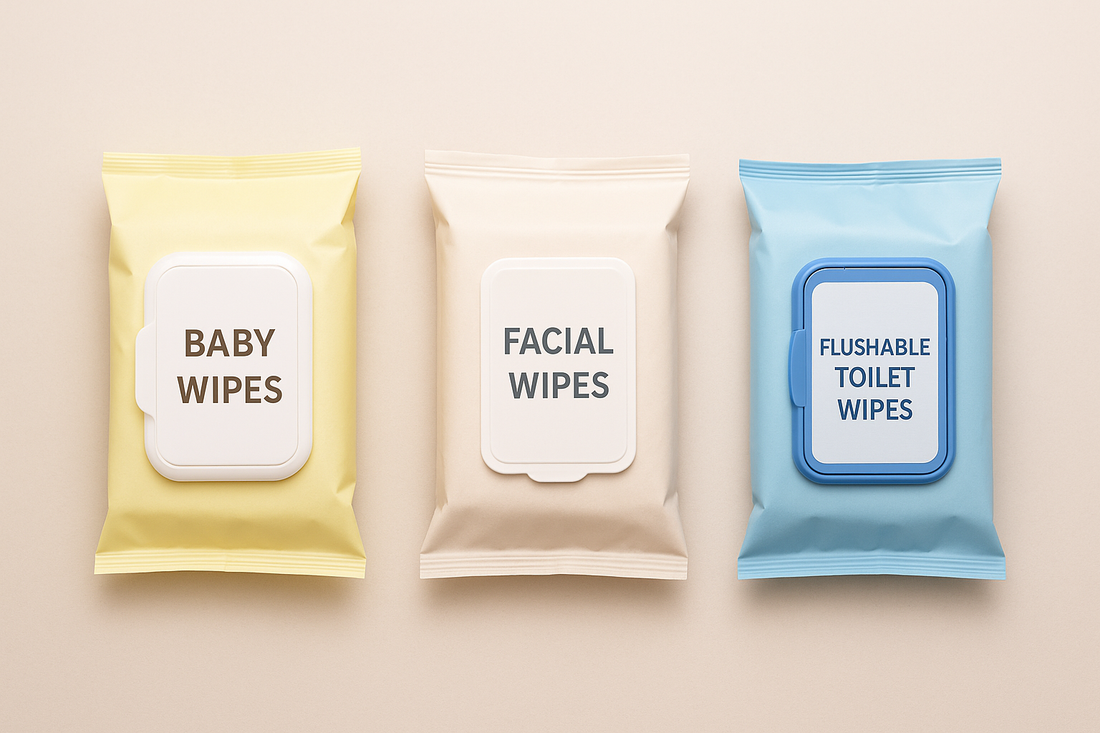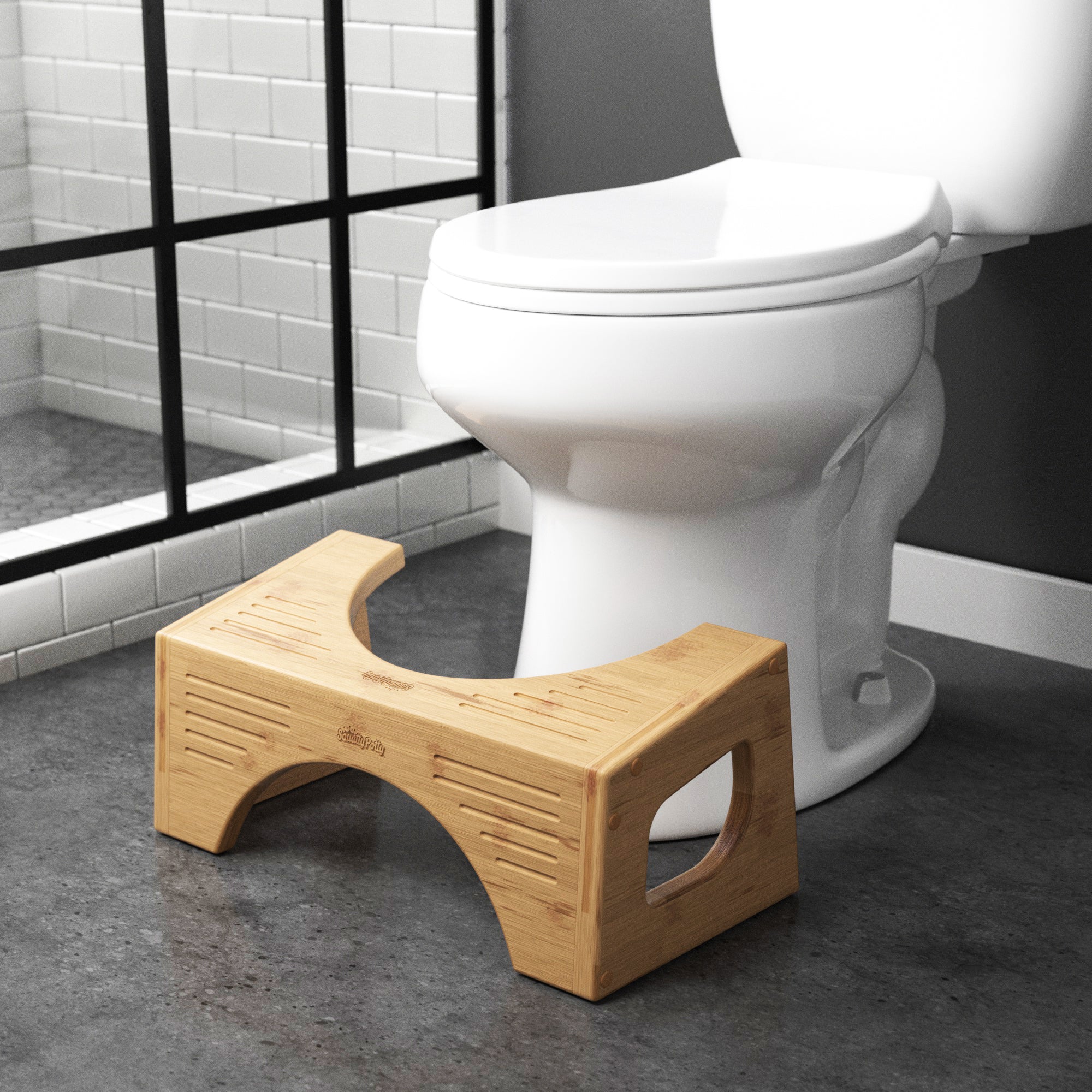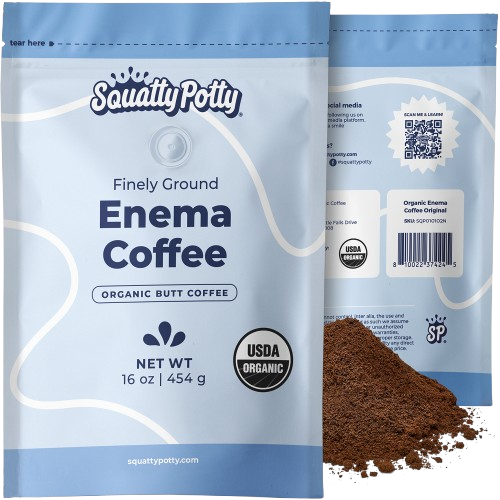Flushable wipes are one of the most debated products in the personal care aisle. They promise the convenience of a wet wipe with the easy disposal of toilet paper — but confusion and controversy surround them. Let’s clear the air (and your pipes) by breaking down the most common myths and the facts behind them.
Myth 1: All wipes labeled “flushable” are safe to flush
🚫 False.
Not all “flushable” wipes are created equal. Many products labeled as flushable don’t actually break down quickly enough in water or through plumbing systems. Unlike toilet paper, which disperses in seconds, many wipes maintain their structure for hours or even days.
✅ The truth:
To be truly flushable, a wipe must pass industry-standard tests like the INDA (GD4)/IWSFG Flushability Guidelines that simulate what happens from your toilet to wastewater treatment. Certified flushable wipes are designed to disperse within a certain amount of time and not clog pipes or pumps. In addition to the certifications, products that have gone through validation testing will have proper flushing instructions written on the packaging to help minimize flushing risks due to unknown, independent variables. Each system is different, so following these flushing instructions will help ensure the wipes are able to effectively breakdown as tested. So the primary takeaway here: Always look for wipes that meet these industry specific testing standards and include flushing instructions - not just marketing claims.
Myth 2: Flushable wipes cause all sewer blockages
🚫 False.
Flushable wipes are often blamed for sewer backups and “fatbergs,” but studies by utilities and independent labs show that non-flushable items like baby wipes, cleaning wipes, paper towels, and feminine hygiene products make up the majority of blockages. (Sources: CWEA, Responsible Flushing Alliance)
✅ The truth:
Properly engineered flushable wipes disperse much faster than traditional wipes. The real issue here is product confusion - people often flush non-flushable wipes thinking they’re the same thing. Clear labeling and consumer education are key to solving this problem.
Myth 3: Flushable wipes are bad for the environment
🚫 Misleading.
Older generations of wipes contained plastics or non-degradable binders that posed environmental risks. However, many modern flushable wipes are now plastic-free, made with cellulose or natural plant fibers that fully degrade under wastewater treatment conditions.
✅ The truth:
Certified flushable wipes are designed to intentionally breakdown, just like toilet paper, and many brands are now sourcing from sustainable forestry or renewable plant materials. The key is using certified, eco-tested products and avoiding generic wipes that lack transparency about materials.
Myth 4: Flushable wipes can replace toilet paper entirely
🚫 Not quite.
While flushable wipes provide a cleaner feel and help reduce irritation, most people find that using a combination of both wipes and toilet paper give them the best wiping experience.
✅ The truth:
Flushable wipes are highly effective at cleaning away the mess, requiring fewer “passes” than toilet paper to remove all residue. Once the messy part is resolved, it can be helpful to use a small amount of toilet paper to dry the area and eliminate any remaining moisture.
Myth 5: Flushable wipes are harsh on sensitive skin
🚫 Outdated.
Early wipes sometimes contained alcohol or fragrances that irritated delicate skin. Today’s formulas are far gentler.
✅ The truth:
High-quality flushable wipes are now dermatologist-tested, hypoallergenic, and often approved for sensitive or eczema-prone skin. Many are infused with soothing ingredients like aloe, chamomile, or vitamin E, making them safe for everyday use by the whole family.
Myth 6: Flushable wipes and baby wipes are basically the same
🚫 False.
They might look similar, but they’re engineered for very different purposes. Baby wipes are strong and durable — designed not to tear during diaper changes — while flushable wipes are built to disperse in water.
✅ The truth:
Flushable wipes use water-dispersible fiber technology, often without plastic binders, so they can safely break down in plumbing systems. Baby wipes, on the other hand, contain synthetic materials like polyester and should never be flushed.
Takeaway: Know the Flush Facts!
The confusion around flushable wipes stems from inconsistent labeling and mixed consumer experiences. To avoid issues only flush certified flushable wipes that meet INDA/IWSFG standards and never flush baby wipes, facial wipes, cleaning wipes, or other non-flushable items down the toilet.
The best way to ensure peace of mind is to use a flushable wipe that you can trust! Our Squatty Potty Flushable wipes are:
- Met independent lab testing that shows that they meet INDA GD4 flushable product guidelines
- Include IWSFG flushable product guidelines
- Hypoallergenic & Dermatologically Tested
- 100% Plant Based Fibers
- 99% Water & Plant Based Ingredients
- Cruelty Free
- Safe for Sensitive Skin
- Safe for Eczema Prone Skin
- pH Balanced
- Formulated without harsh chemicals, oils, parabens, or sulfates
- Infused with aloe, vitamin e, chamomile, green tea, and cucumber
We did the research to make sure you can wipe with ease and flush with confidence! So upgrade your bathroom routine - click on this link and order yours today: Upgrade My Bathroom Routine!










